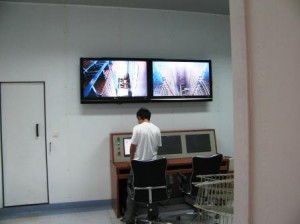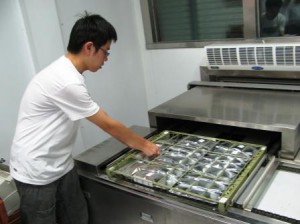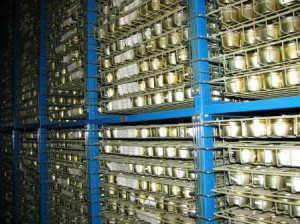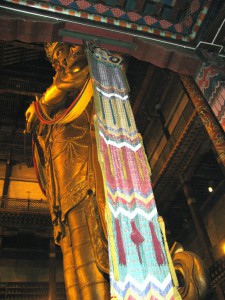 It is well known that crops go through a genetic bottleneck at domestication. Due to the founder effect, they typically show a fraction of the genetic diversity found in their wild relatives. Which is bad, but fixable: fixing it is the plant breeder’s job — or part of it anyway. What’s less well known, according to a recent paper on lentils by Willy Erskine and co-authors in GRACE, is that the movement of a crop around the world can also often lead to bottlenecks. ((Erskine, W., Sarker, A., & Ashraf, M. (2010). Reconstructing an ancient bottleneck of the movement of the lentil (Lens culinaris ssp. culinaris) into South Asia Genetic Resources and Crop Evolution DOI: 10.1007/s10722-010-9582-4))
It is well known that crops go through a genetic bottleneck at domestication. Due to the founder effect, they typically show a fraction of the genetic diversity found in their wild relatives. Which is bad, but fixable: fixing it is the plant breeder’s job — or part of it anyway. What’s less well known, according to a recent paper on lentils by Willy Erskine and co-authors in GRACE, is that the movement of a crop around the world can also often lead to bottlenecks. ((Erskine, W., Sarker, A., & Ashraf, M. (2010). Reconstructing an ancient bottleneck of the movement of the lentil (Lens culinaris ssp. culinaris) into South Asia Genetic Resources and Crop Evolution DOI: 10.1007/s10722-010-9582-4))
Lentil cultivation moved from Afghanistan into the Indo-Gangetic Plain sometime between 7000 and 4000 BC. The authors “reconstructed” this movement by growing random subsets of the ICARDA world lentil collection at two sites, Islamabad and Faisalabad, in Pakistan. Faisalabad is typical of conditions in the Plain, Islamabad is a transitional, mid-altitude environment.
They found that most Afghani accessions did not flower in Islamabad before the local material matured, due to a combination of temperature and photoperiod, the main determinants of flowering in lentils. The few that did were among the most late-flowering in the world. This is probably related to the shift in sowing from winter to spring as lentils moved from their area of origin in lowland SE Turkey and N Syria into the central Asian plateau. The data from Faisalabad in addition showed that every week’s delay in flowering resulted in a 9% loss of yield potential in the lowlands.
So there was strong selection for reduced sensitivity to photoperiod and a return to early flowering as the lentil moved into the Indo-Gangetic Plain, and consequently a genetic bottleneck. ((Incidentally, I am told by Jacob that a genetic bottleneck related to flowering time (earliness) also occurs in the Northern flint maize varieties in the US and Canada.)) But in a way the surprising thing is that there was no cork in the bottle. Where did the genetic variation that allowed adaptation to the Plain come from? The authors note that time to flower in lentils is controlled by both single gene and polygenic systems, and that early flowering is always recessive. Those recessive alleles for early flowering, which may have come from introgression from a wild relative in Afghanistan, must have occasionally come together and been selected for at mid-altitudes, which then “allowed selection for a radically earlier flowering habit as a new adaptive peak for the novel environment of the Indo-Gangetic Plain.”
The challenge is now for breeders to use these insights to broaden the genetic base of the crop in India, where lentil germplasm “is among the least variable among lentil-producing countries for agro-morphological traits … despite its vast area of cultivation there today.”





 The
The